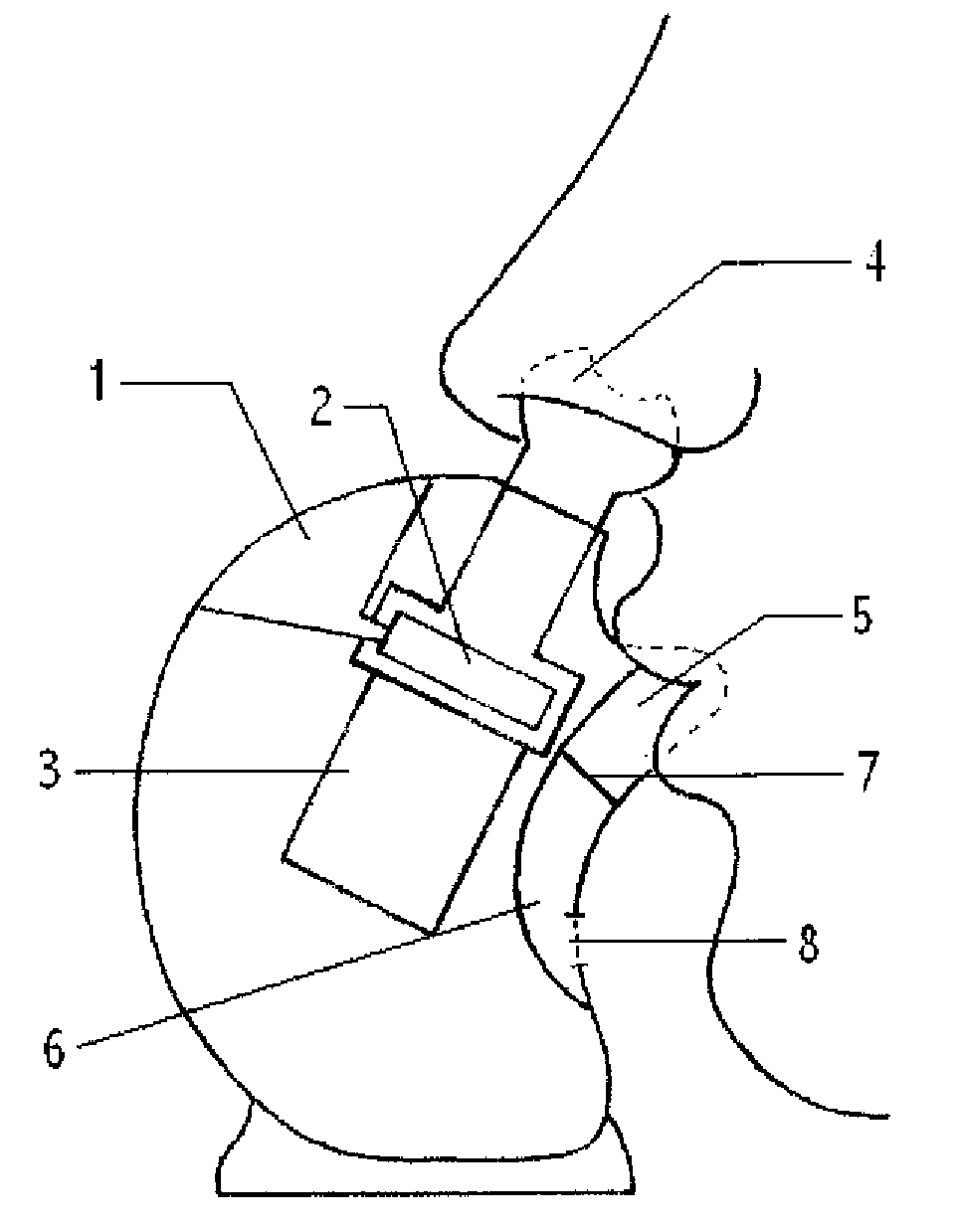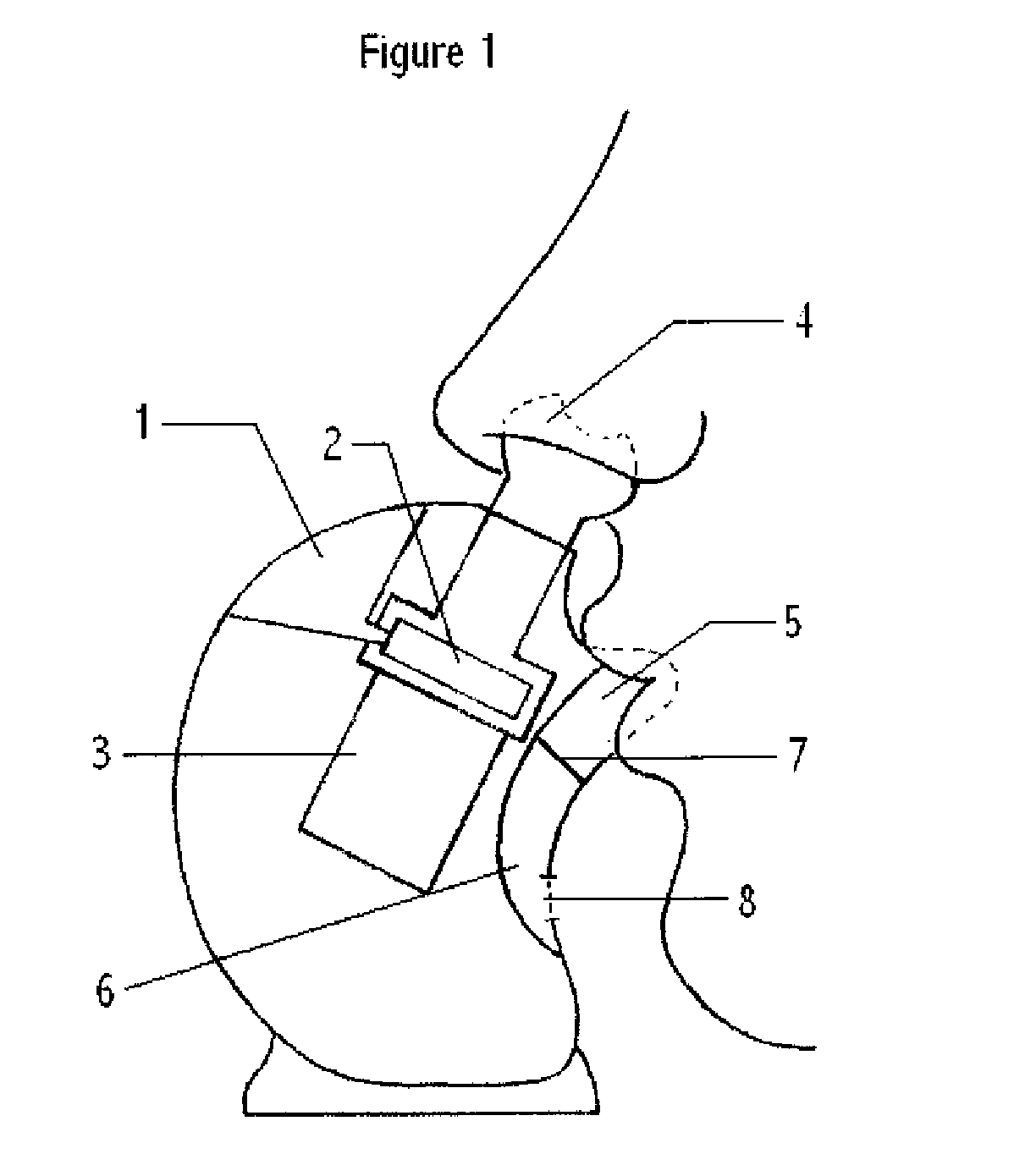Aerosol therapy device with high frequency delivery
a high-frequency, aerosol technology, applied in the direction of medical atomizers, inhalators, etc., can solve the problems of not being able to effectively and efficiently deliver many drugs to the brain, not being able to meet the needs of every nebulizer, etc., to achieve the effect of facilitating inhalation and increasing the potential for aerosol deposition
- Summary
- Abstract
- Description
- Claims
- Application Information
AI Technical Summary
Benefits of technology
Problems solved by technology
Method used
Image
Examples
example 1
Parametric Deposition Test
[0143]A nasal cast model is made of silicone with sinuses being represented by four cylindrical chambers of equal volume. The ostia diameter is varied from 0.5 mm to 3 mm and the size of the chambers is altered from 5 to 25 mL. A 1% NaF tracer solution is deposited as an aerosol into the nasal cast using the aerosol therapy device of present invention.
[0144]The nasal cast is disassembled and the tracer solution is washed from each individual part for potentiometric analysis. The whole amount of aerosol deposited in the sinus cavities is calculated form the sum of the single cavities (sum of sinuses).
[0145]The ostium size, resonance frequency of the pulsating air flow, pressure of the pulse, chamber size, and the mass median particle size are altered in varying combinations. The deposition amount is measured by potentiometric analysis and compared.
example 2
Technetium Imaging Test
[0146]A nasal cast similar to Example 1 is used. Scintigraphic images are performed of the models in above, face, and profile views using a technetium (99mTc)-labeled solution, which is deposited as an aerosol into the nasal cast using the aerosol therapy device of present invention. The aerosol therapy device generates a single airflow consisting of a pulsating flow of air comprising an acoustic pressure field ranging from about 15 to about 40 mbar, wherein the airflow pulsates at a frequency of about 800 Hz.
[0147]The radioactivity deposited on gauze compresses placed inside the maxillary sinuses is counted. The results confirm that aerosols which are delivered from the aerosol therapy device can reach the maxillary sinuses, which is one of the primary areas for sinusitis disorders.
example 3
Paranasal Deposition Testing Using an Endoscopic Sinus Surgery Model
[0148]A human paranasal model developed for Endoscopic Sinus Surgery (ESS) training (ESS Basic Set, SurgiTrainer, Ltd., Ibaraki, Japan) is used to evaluate the paranasal sinus deposition of a 1% NaF tracer solution, which is deposited as an aerosol into the nasal cast using the aerosol therapy device of present invention. The aerosol therapy device generates a single airflow consisting of a pulsating flow of air comprising an acoustic pressure field ranging from about 15 to about 40 mbar, wherein the airflow pulsates at a frequency of about 800 Hz.
[0149]The human paranasal model is disassembled and the tracer solution is washed from each individual part for potentiometric analysis. The whole amount of aerosol deposited in the sinus cavities is calculated from the sum of the single cavities (e.g., maxillary, sphenoid, ethmoid and frontal sinuses).
[0150]The deposition amount is measured by potentiometric analysis and ...
PUM
 Login to View More
Login to View More Abstract
Description
Claims
Application Information
 Login to View More
Login to View More - R&D
- Intellectual Property
- Life Sciences
- Materials
- Tech Scout
- Unparalleled Data Quality
- Higher Quality Content
- 60% Fewer Hallucinations
Browse by: Latest US Patents, China's latest patents, Technical Efficacy Thesaurus, Application Domain, Technology Topic, Popular Technical Reports.
© 2025 PatSnap. All rights reserved.Legal|Privacy policy|Modern Slavery Act Transparency Statement|Sitemap|About US| Contact US: help@patsnap.com



